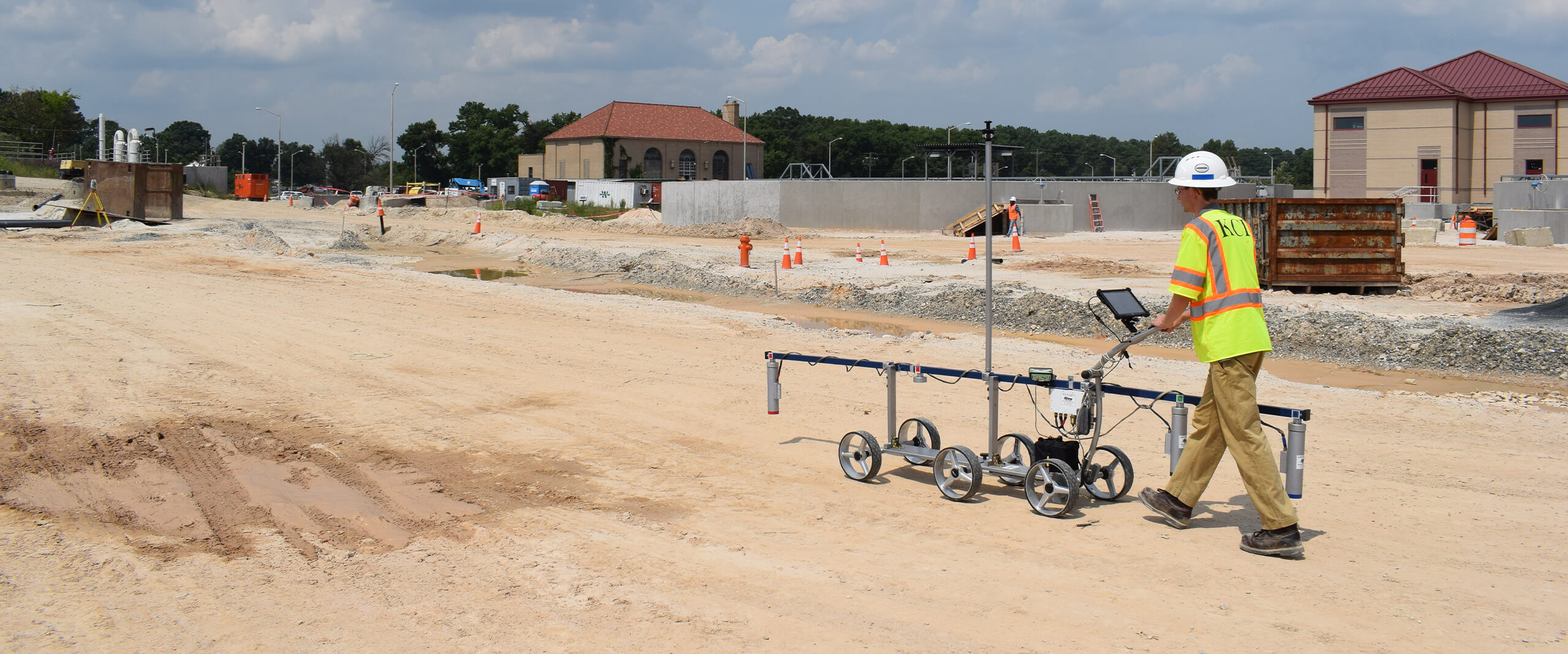Navigating Geotechnical Services: The Value of Geotechnical News, Soil Compaction Screening, and Pavement Design in Ensuring Structural Stability
In the realm of design and building, the foundation whereupon a structure is constructed plays a critical duty in its durability and security. Geotechnical services, incorporating the production of geotechnical records, carrying out dirt compaction testing, and thorough pavement layout, work as the keystone of making sure structural stability. These essential elements not just prepared for effective project implementation yet likewise minimize potential risks that can compromise the stability and longevity of a building task. As we look into the elaborate interaction between geotechnical analysis and architectural sturdiness, the vital nature of these solutions in safeguarding versus unforeseen difficulties comes to be increasingly obvious.
Significance of Geotechnical Reports
Geotechnical reports play a critical duty in giving thorough understandings right into the soil and rock conditions of a site, important for guaranteeing the structural integrity of building and construction tasks. These records are an essential element of the preliminary site investigation procedure, using useful info that affects the design, construction methods, and general expediency of a project. By analyzing dirt make-up, security, and prospective risks such as landslides or sinkholes, geotechnical reports enable designers to make educated decisions pertaining to structure layout and building techniques.
Furthermore, geotechnical records aid in risk analysis and mitigation strategies, aiding task stakeholders understand the potential obstacles that may arise throughout construction. Via thorough assessment and analysis of geotechnical information, engineers can create solutions to attend to site-specific issues, making certain the long-lasting security and security of the framework. Ultimately, the extensive nature of geotechnical records serves as an important foundation for effective project planning and implementation, lessening risks and improving overall job end results.

Duty of Dirt Compaction Screening
Just how crucial is the assessment of soil compaction via testing for making sure the security and durability of building jobs? Dirt compaction testing plays an important role in the building market by ensuring that the soil beneath a framework is properly compressed to sustain the intended load and prevent settlement (geotheta). Correctly compacted dirt gives a steady foundation for buildings, roadways, and various other structures, reducing the risk of structural failing and costly repair services in the future
Soil compaction screening includes determining the density of the soil and contrasting it to the optimum density achievable for that certain soil type. This helps designers figure out if the soil has actually been compressed sufficiently to sustain the organized structure. By conducting dirt compaction tests throughout building, designers can determine any locations that call for extra compaction and take corrective procedures before continuing with further building and construction.
Importance of Sidewalk Layout
Evaluating soil compaction through screening not just makes sure the stability and durability of building jobs but also lays a crucial structure for effective pavement style. Correct sidewalk style considers factors such as website traffic lots, environmental conditions, soil attributes, and material homes to produce a robust and lasting surface area. By incorporating data from dirt compaction tests, designers can figure out the suitable thickness, products, and layering for the sidewalk to endure anticipated stress and anxieties and preserve structural stability over time.
Making Sure Structural Honesty
These reports provide important information on soil composition, stability, and potential threats, assisting in educated decision-making during the layout and building and construction stages. In addition, performing detailed soil compaction screening is important websites to ensure that the soil below sidewalks or structures is effectively compacted to support the intended loads and prevent negotiation concerns.
Moreover, carrying out robust pavement layout methods is essential for ensuring the architectural stability more of roads, parking area, and various other paved surfaces. Correct pavement design takes into consideration aspects such as web traffic quantity, ecological conditions, and dirt attributes to produce durable and secure transport infrastructure. By sticking to these methods and making use of geotechnical solutions successfully, construction tasks can improve their architectural stability, minimize dangers of failing, and make sure the long-term efficiency of the built setting.
Protecting Versus Risks
In light of the critical importance placed on making sure architectural stability through thorough interest to product selection and soil testing, guarding versus dangers ends up being paramount in maintaining the stability and longevity of construction jobs. Threats in building and construction tasks can stem from numerous resources, consisting of natural disasters, dirt instability, or layout problems.
In addition, developing backup strategies and executing durable tracking systems can assist alleviate unanticipated dangers that may occur during building and construction. Regular assessments and quality assurance steps ought to be carried out to ensure that products are utilized based on specifications which building practices follow market standards. By proactively identifying and resolving prospective risks, building and construction jobs can enhance their strength and minimize the likelihood of architectural failures, inevitably guaranteeing the safety and long life of the built setting.
Final Thought

Soil compaction testing plays an important duty in the construction sector by making sure that the dirt below a structure is properly compressed to sustain the desired tons and protect against settlement.Soil compaction screening involves determining the thickness of the dirt and contrasting it to the optimum density attainable for that certain soil kind (geotheta). By conducting soil compaction tests during building and construction, designers can determine any type of locations that need additional compaction and take rehabilitative actions before proceeding with more building
Additionally, performing detailed soil compaction screening is vital to guarantee that the soil underneath pavements or structures is appropriately compacted to support the desired tons and prevent negotiation problems.
In conclusion, geotechnical records, soil compaction screening, and pavement style play crucial duties in guaranteeing the architectural stability of building and construction jobs.